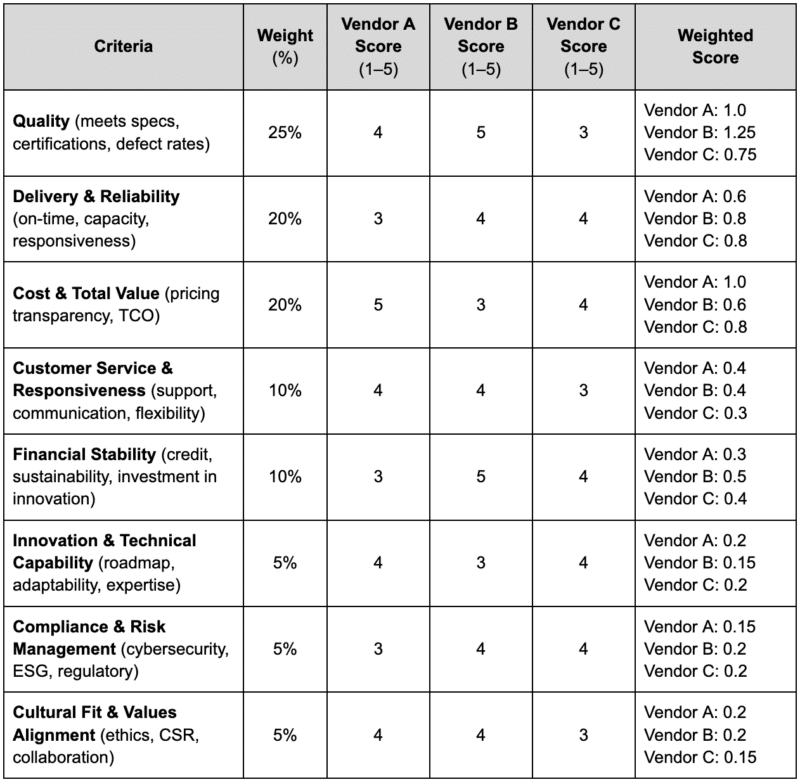Vendor Evaluation Benefits
A systematic vendor sourcing plan delivers wide-ranging benefits:
- Cost Control: Competitive evaluations help to secure fair pricing and uncover the total cost of ownership, not just the upfront quote.
- Quality Assurance: Reliable partners deliver consistent quality, reducing rework, complaints, and downtime.
- Risk Mitigation: Thorough vetting uncovers risks tied to financial instability, compliance failures, security gaps, or unreliable delivery.
- Regulatory and Ethical Compliance: Screening vendors for standards and practices protects both operations and reputation.
- Efficiency and Performance: Reliable vendors streamline workflows, reduce delays, and keep operations running smoothly.
- Customer Satisfaction: Consistent delivery of high-quality services strengthens customer trust and loyalty.
- Brand Reputation: Vendors reflect on your organization. Strong vendor choices enhance credibility, while poor ones can damage it.
- Innovation and Growth: Strategic partners bring new ideas, technologies, and approaches that help organizations stay competitive.
- Long-Term Value: Build lasting relationships that scale with your business.






